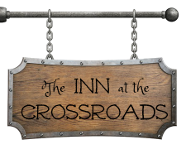“Maester Luwin sent Poxy Tym down to the kitchens, and they dined in the solar on cheese, capons, and brown oatbread. While tearing apart a bird with fat fingers, Lord Wyman made polite inquiry after Lady Hornwood, who was a cousin of his.” -A Game of Thrones

Brown Oatbread
Thoughts:
I tried several recipes before lighting upon this one in an old family cookbook, on a snippet of browned newspaper clipping. As is so often the case in my kitchen, the old recipe took the day. This is such an amazingly light, fluffy, soft bread, and almost impossibly easy. It requires no kneading, and is quick to rise, and fills the whole house with a rich, buttery aroma while it bakes. I can just imagine loaves of this bread luring the Stark children to the kitchens of Winterfell. Homey enough to be a comfort food, but delicious enough to serve to guests, it could well be a staple of Northern cuisine.
Because the bread is so soft, it has to be cut into fairly thick slices- what a shame! Light toasting makes for a sturdier slice that is ideal with jam, honey, or other spreads. And, as in the quote, it is excellent with some cheese and chicken.

Recipe for Brown Oatbread
Ingredients:
- 2 cups boiling water
- 1/2 cup molasses
- 2 Tbs. butter
- 1 cup rolled oats (not the instant variety)
- 1 Tbs. yeast
- 1/2 tsp. coarse salt
- ~2 cups flour (you may need more or less depending on how much liquid your oats soaked up)
- 1 Tbs. melted butter
Combine the boiling water with the molasses and butter, stirring to combine. Pour this over the rolled oats, and let sit for 30 minutes. When the mixture is warm to the touch, but not hot, stir in the yeast, and let sit for another 15 minutes. It should be very light and bubbly at this point. Add the salt, followed gradually by the flour, until the dough no longer sticks to the sides of the bowl.
Transfer the dough to a clean, greased bowl, and brush the top with melted butter to keep from drying out. After the dough has doubled in bulk, transfer it to a bread pan, brush the top with butter, and let it rise again until doubled.
Bake at 350 for ~40 minutes, when the bread should be a nice golden brown. Allow to cool for at least 30 minutes before taking it out of the pan and slicing. Enjoy!











 Elizabethan Honeycakes
Elizabethan Honeycakes